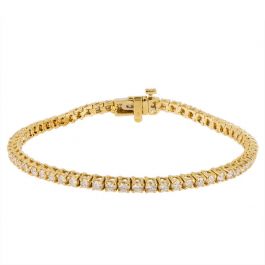Luxury goods have always been a symbol of wealth and status, and their demand has been growing steadily over the years. The Faberge Sasha 18ct Rose Gold 0.15ct Diamond Bracelet 1739 Bracelet is just one example of the extravagant items that people are willing to purchase. With a price tag of over £1,400, it is clear that the market for luxury goods is not a small one.

The rise in demand for luxury goods is not just a trend in developed countries but extends across the globe. With the rise of affluent consumers in emerging markets such as China and India, luxury brands have new opportunities to expand their reach. Chinese consumers have become a major force in the luxury goods market, accounting for nearly one-third of the global luxury sales. They have a strong appetite for high-end fashion, jewelry, watches, and other luxury items. The increase in spending power in these markets has led to a significant boost in the demand for luxury goods.
The impact of this growing demand on the global economy cannot be ignored. The luxury goods industry generates significant revenue and creates jobs in various sectors, including manufacturing, distribution, and retail. The growth of this industry has a direct positive impact on the economies of the countries where luxury goods are produced, such as Italy and France.
The impact of the luxury goods industry extends beyond just economic growth. It also has social and environmental implications. High-end brands are known for their commitment to sustainability, utilizing eco-friendly materials, and ethical production practices. This means that as the demand for luxury goods grows, companies must ensure that their production and distribution processes are sustainable, environmentally friendly, and fair to the workers.
The impact of the luxury goods industry is not limited to the positive effects. There are also some negative implications. For example, the demand for luxury goods has led to increased counterfeiting, which not only harms the brand's reputation but also negatively affects their revenue. Additionally, the production of luxury goods often involves the use of exotic materials that are endangered, leading to environmental concerns.
Despite these challenges, the luxury goods market is expected to continue to grow in the coming years. As the demand for luxury goods expands to new markets and consumer segments, brands must adapt to meet the unique needs of these customers. Digital technologies will play an increasingly essential role in the luxury goods market, with brands using innovative technologies like augmented reality and personalized recommendations to enhance the customer experience.
In conclusion, the demand for luxury goods is a growing trend that is not limited to a particular group of consumers or a specific market. The industry generates significant economic value and has social and environmental implications that must be addressed. As the luxury goods market expands, brands must be prepared to meet the evolving needs of their customers while maintaining their commitment to sustainability and ethical practices.